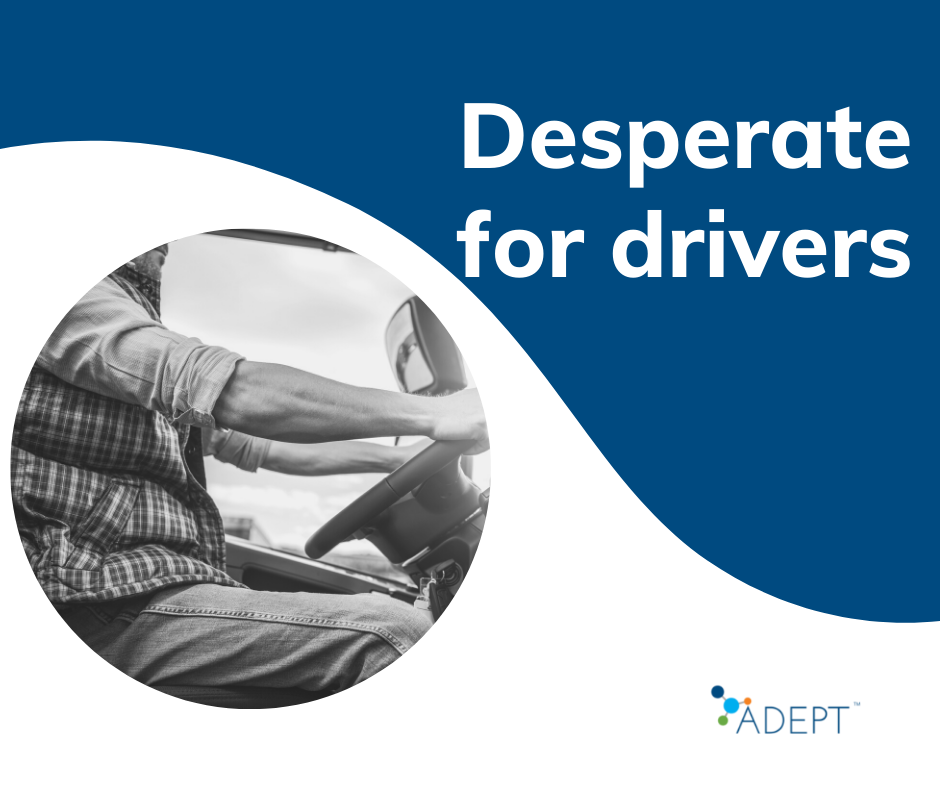Desperate for Drivers
Using a 275-gallon heating oil tank as an example, most Heating Oil companies set their “Optimal Fill” at somewhere between 170 and 190 gallons. Whether that is the right level or not will be addressed in another conversation, but regardless of the reasoning, no one achieves their desired goals of reaching “Optimal”. The thinking may vary, but there are really only two possible reasons that Optimal Fills are not achieved:
- Timing. Deliveries are made either earlier or later than your Back-Office System tells you to make the delivery (more often it is early). An “early” delivery would, logically, be smaller than anticipated, and a “late” delivery should be larger. Or,
- Calculation. The BOS-reported level at the time of the delivery is not truly representative of the fuel level in the tank, leading to a delivery that is not the right size.
These two reasons are very valid, but we wanted to see if we could dig down further to find if there were one culprit that was greater than the other – i.e., are deliveries small simply because dispatchers send out their drivers before the BOS says that there is room for an optimal delivery, or perhaps the deliveries were small because the in-tank levels reporting by the BOS are just incorrect?
To accomplish this, we did what we always to – we looked at the data. We reviewed over a half million deliveries starting at the beginning of the year from 20+ companies and 4 different back-office systems. What we were looking for was not the size of the delivery, but the size of the delivery REALTIVE TO the expected size of the delivery. As an example, if there are 250 “Usable” gallons and the BOS reports that there are 70 gallons in the tank, you would expect a delivery of ~180 gallons. In addition, if that same tank had a reported in-tank level (“ITL”) of 175 gallons, you would expect a delivery of ~75 gallons. So, the research was not whether the Optimal fill was achieved, but whether the “expected” delivery size was achieved.
We know that K’s and baseloads are only estimates, and that the math of those consumption calculations cannot always predict actual consumption by actual homeowners. However, we did not realize how big the variances would be, nor how “skewed” they would be. Deliveries are most often smaller than expected and given enough data, they are predictably smaller. Time of year matters and how long you have had the customer matters, as well. Wintertime deliveries were generally closer to “expected” than summertime deliveries were. Newer customers were both smaller and more unpredictable than more tenured customers.
The reasons are both purely mathematical and perfectly logical. Think about how you deal with new customers (and let’s not forget that it is common for about 40% of your customers to have been with you for fewer than 5 years). Many companies set their new customers with artificially low K’s (i.e., a K of 4 for a customer who is most likely a 5.5). The logic is that small deliveries don’t result in runouts, and “the BOS will figure out the K over a couple of winters”, so the small deliveries are a “good idea”. In addition, and something that a BOS can never fix (only you can), setting a baseload at .50 gallons per day instead of, say, .25 gallons per day can negatively impact the ITL and expected deliveries. The big picture is that out of an extreme fear of runouts, dealers set up customers conservatively, and by the time the BOS catches up, there is a 40% chance that the customer is gone. Until you get the right K and the right baseload, your BOS will continue report to you levels that are not correct – and it is not the fault of the BOS.
Fear of running out is legitimate but using data to determine proper delivery planning has arrived. There is a theme in our industry of “one size fits all”. If you want to continue to treat your new customers the same as your existing customers and if you don’t want to learn anything from the actual delivery sizes – as opposed to either expected or Optimal – then, you should simply keep with what you have been doing. If you want to improve your results, use the individual customer data to do so – it is part of the ADEPT process or you can analyze on your own. Either way, do something about it.


